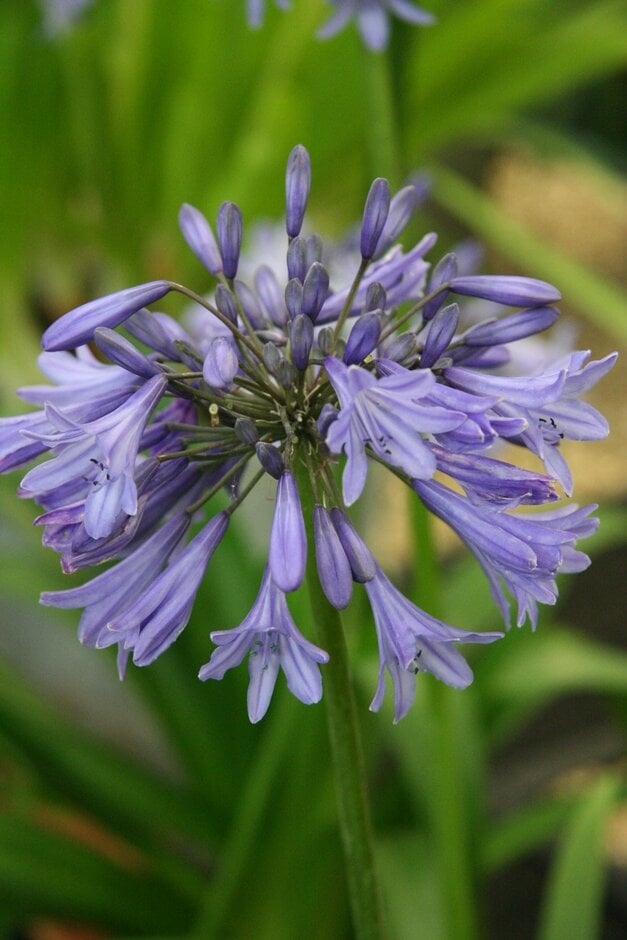Agapanthus 'Sylvine'
African lily 'Sylvine'
A compact, clump-forming, herbaceous perennial to about 70cm, with strap-shaped leaves. Rounded heads of funnel-shaped flowers, of mid-blue petals with deep blue midribs, are produced in late summer and early autumn
Size
Ultimate height
0.5–1 metresTime to ultimate height
2–5 yearsUltimate spread
0.5–1 metresGrowing conditions
Moisture
Moist but well–drainedpH
Acid, Alkaline, NeutralColour & scent
| Stem | Flower | Foliage | Fruit | |
| Spring | Green | |||
|---|---|---|---|---|
| Summer | Blue | Green | ||
| Autumn | Blue | Green | ||
| Winter |
Position
- Full sun
Aspect
South–facing or West–facing
Exposure
Sheltered Hardiness
H4Botanical details
- Family
- Amaryllidaceae
- Native to GB / Ireland
- No
- Foliage
- Deciduous
- Habit
- Clump forming
- Potentially harmful
- Humans/Pets (dogs, cats): harmful if eaten. Wear gloves and other protective equipment when handling. For further information and contact numbers regarding pets, see the HTA guide to potentially harmful plants
- Genus
Agapanthus are clump-forming perennials with narrowly strap-shaped leaves, evergreen in some species, and erect stems bearing umbels of funnel-shaped blue or white flowers
- Name status
Accepted
How to grow
Cultivation
In mild areas, plant out in well-drained soil in a sunny, sheltered position. Otherwise, grow in a container in a sunny spot, and overwinter indoors, in a cool greenhouse or conservatory to protect from frost. Water during the growing season and liquid feed monthly from spring to flowering. See agapanthus cultivation
Propagation
Propagate by division in spring
Suggested planting locations and garden types
- City and courtyard gardens
- Coastal
- Patio and container plants
- Cottage and informal garden
- Flower borders and beds
Pruning
No pruning required; seedheads can provide good winter structure
Pests
May be susceptible to agapanthus gall midge, slugs and snails
Diseases
May be susceptible to a virus
Get involved
The Royal Horticultural Society is the UK’s leading gardening charity. We aim to enrich everyone’s life through plants, and make the UK a greener and more beautiful place.
